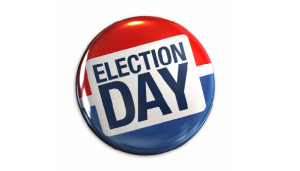
How Data Analytics Shaped Election Day 2014

Today is Election Day, when political scientists finally get to see the manifestations of their careful calculations. But increasingly, elections are being influenced by data scientists who are experts at wielding big data analytics to achieve an end.
President Obama’s re-election campaign took political data science to new heights in 2012. The campaign had a large and well-funded analytics team of 165 people, who worked nearly two years to collect data and segmented and categorized the entire American electorate in ways that had never been attempted.
Armed with fine-grained voter sentiment data and a savvy social media machine left over from the 2008 election, Obama’s campaign executed targeted outreach where they had the best chance of having an impact. It’s hard to say how much the analytics influenced the result, but the big data is widely credited with being a big factor in the win. (Mitt Romney also had a big data team, but it got a late start and wasn’t a big factor).
Big data’s big entry into the national political arena was also evident in the work of statistician Nate Silver. Working with analytics through his blog FiveThirtyEight.com, Silver correctly predicted the outcome of predicted the presidential election winner in all 50 states and the District of Columbia. Silver’s used a range of data and techniques for his analysis, and demonstrated that there are better alternatives to the opinion polls that Americans had previously relied on to provide “objective” information.
Fast forward to November 4, 2014, and big data is playing a much bigger role in today’s election. There’s been a rapid proliferation in the creation of big political data science teams, and it’s fair to say the Democrats no longer hold a decisive edge here.
Republicans who were on the business end of Obama’s big data guns in 2012 are now wielding powerful analytic tools of their own, including Para Bellum Labs, a startup company that’s being incubated within the Republican National Committee.
“Our products reach millions of Americans, and we are pushing the envelope on data engineering as it applies to politics,” the company Washington D.C.-based company says on its website. Judging from its job board, Para Bellum is working with NoSQL databases and machine learning algorithms (although it’s not clear if the company already has these skills).
Then there is Voter Gravity, another Republican-sponsored big data outfit that seeks to “turn data into votes.” The company has built a platform that uses mapping software from geographic information systems (GIS) software provider Esri to create more accurate voter targeting and volunteer walk lists. The software also provides predictive dialing for volunteers.
Voter Gravity CEO Ned Ryun says the lack of talent or technology is not the biggest problem for Republicans or people who align themselves “center-right” on the political spectrum. “Our biggest weakness is a culture where important things like data and analysis are not emphasized,” he tells Network World. “As a guy who’s done grassroots campaigns in past and as a tech guy, as well, this worries me.”
Detailed information about more than 250 million American voters is cataloged and maintained by Data Trust, a Republican-oriented data analytics outfit that’s based in D.C. The company has an API-accessible data store that lets GOP groups access clean data about voters, segmented in the manner they need.
and maintained by Data Trust, a Republican-oriented data analytics outfit that’s based in D.C. The company has an API-accessible data store that lets GOP groups access clean data about voters, segmented in the manner they need.
Finally there’s i360, another big data outfit that was set up by the Koch brothers. i360, which maintains that “needles are no match,” provides Republican groups access to detailed records about 250 million American voters. The company, which has an agreement with Data Trust, also provides a range of data management and social media outreach tools.
Private marketing and big data firms are also getting into the political act this year. DirecTV and Dish Network, which compete to provide satellite TV service to millions of Americans, are collaborating on an “addressable advertising platform” that allows campaigns and groups to target potential voters with high degrees of precision.
According to a story in the US News and World Report, Dish and DirecTV can reach about 20 million homes with this service, and can serve up political ads to specific cross sections of America, including targeting people by party, by state, by affiliation, by likelihood to vote, and by persuadability.
This has been a banner year for political advertising, as politicians seek any edge in competitive races. In many cases, big data is helping to drive targeted ads to highly segmented portions of the populace. For some political observers, the fact that voters no longer get to see all the ads from all the participants in a given race, but only the ads they have been targeted for, represents lost information for the voter.
Like censuses, elections are great sources of hard data about the state of our nation. Unfortunately, today’s mid-term election is not expected to generate a big turnout, which means it’s less like a census and more like a survey of one-quarter of the people. Regardless of the sample size, the political stakes today are high, and thanks to big data analytics, parties have optimized their $1 billion in advertising. That will (hopefully) bring us a small step closer to a more perfect union.
Related Stories
Big Data Analytics Give Electoral Edge
How Data Analytics is Shifting Politics
Startup Launches Legislative Prediction Engine



























